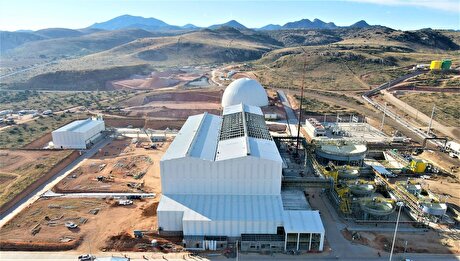
China’s Tangshan Jinma Steel Targets Inner Mongolia to set up its Production base

The construction is expected to begin in 2020, with production starting three years later. Designed with an annualised capacity of 3 MnT of quality steel, the project will employ 6,000 people. The company already has a production capacity of 2.4 MnT in Luan Country, Tangshan.
The production base will also replace 1.8 MnT of coke capacity from Chifeng Defeng Coke plant to manufacture methanol and ammonia.
Inner Mongolia has become a favoured destination to set up steel and even graphite electrodes plants by the Chinese players due to the advantage of lower electricity costs.
In order to control rising pollution, China’s Tangshan city is making serious efforts over the past few years and is ordering polluting units to completely shut down and is motivating others steel to shift their base. In early May this year, Tangshan city has set higher iron and steel capacity cuts target for 2019 after the feedback received from the air pollution inspection team.
It has set a target to achieve reduction of steelmaking capacity of 10.06 MnT, ironmaking capacity of 8.04 MnT, coal production capacity of 500,000 tonnes. The official document pointed out that there are 40 steel enterprises in Tangshan, and the production capacity of pig iron and crude steel is 128 MnT and 134 MnT respectively, accounting for 53% and 56% of the Hebei province’s total capacity.
Subsequently, it is imperative for Tangshan City to further compress its capacity and optimize the industry structure. It is confirmed that in order to improve the air quality, Tangshan city, by 2020 will reduce the steel production capacity down to about 100 MnT and steel enterprises will be reduced to less than 30, completing the relocation of steel mills situated in urban areas and those environment vulnerable areas.



Trump weighs using $2 billion in CHIPS Act funding for critical minerals

Electra converts debt, launches $30M raise to jumpstart stalled cobalt refinery

Codelco cuts 2025 copper forecast after El Teniente mine collapse

Barrick’s Reko Diq in line for $410M ADB backing

Abcourt readies Sleeping Giant mill to pour first gold since 2014

SQM boosts lithium supply plans as prices flick higher

Nevada army depot to serve as base for first US strategic minerals stockpile

Pan American locks in $2.1B takeover of MAG Silver

Viridis unveils 200Mt initial reserve for Brazil rare earth project

Kyrgyzstan kicks off underground gold mining at Kumtor

Kyrgyzstan kicks off underground gold mining at Kumtor

KoBold Metals granted lithium exploration rights in Congo

Freeport Indonesia to wrap up Gresik plant repairs by early September

Energy Fuels soars on Vulcan Elements partnership

Northern Dynasty sticks to proposal in battle to lift Pebble mine veto

Giustra-backed mining firm teams up with informal miners in Colombia

Critical Metals signs agreement to supply rare earth to US government-funded facility

China extends rare earth controls to imported material

Galan Lithium proceeds with $13M financing for Argentina project

Kyrgyzstan kicks off underground gold mining at Kumtor

Freeport Indonesia to wrap up Gresik plant repairs by early September

Energy Fuels soars on Vulcan Elements partnership

Northern Dynasty sticks to proposal in battle to lift Pebble mine veto

Giustra-backed mining firm teams up with informal miners in Colombia

Critical Metals signs agreement to supply rare earth to US government-funded facility

China extends rare earth controls to imported material

Galan Lithium proceeds with $13M financing for Argentina project

Silver price touches $39 as market weighs rate cut outlook

















